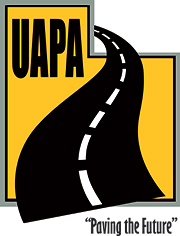The U.S. has had a difficult couple of years because of the COVID-19 pandemic, the pandemic recession and a larger-than-expected cohort of retirees. Compared to other states, though, Utah has done remarkably well during this challenging time, outperforms other states, and is a model for getting things done.
- When it comes to recent growth, Utah and Idaho are battling for the No. 1 spot in the country.
- States like California are financially in the red; Utah is not.
- Between September 2019 and September 2021, Utah’s job growth was at 3.4%. The worst state for job loss was Hawaii (-12.6%), and the nation as a whole was -2.5%.
- As a direct result of California’s current problems, many people have left it for other destinations, especially in the Intermountain West. Utah and Idaho are two of those popular destinations, as is Texas in the southern part of the country.
- Utah’s median age is the youngest in the country.
That 3.4% increase in jobs is great news, but it doesn’t tell the whole story, either. Different industries within the state have had very different situations over the last two years.
- Natural resources and mining dropped -12.6%.
- Leisure and hospitality dropped -2.3%.
- Government employment dropped -2.2%.
In contrast, other industries increased, sometimes dramatically. Five industries had the biggest employment gains:
- Construction increased the number of employees by 10.8%.
- Financial activities employment increased by 8.7%.
- Professional and business services increased by 6.8%.
- Manufacturing increased by 6.4%.
- Trades, transportation and utilities increased by 6.1%.
Another interesting way to look at Utah employment is by looking at the unemployment rate, adjusted seasonally. Utah has an unemployment rate of 2.4%, compared with the national rate of 4.8%. On a county-by-county basis, Cache County has the lowest unemployment rate (1.5%), and Garfield has the highest (6.2%). The eastern and southern counties in the state generally have higher unemployment rates than the northern and western counties. If you look at the state’s eastern border, the numbers from the U.S. Bureau of Labor Statistics are as follows:
- Daggett (3.5%)
- Uintah (4.1%)
- Grand (4.2%)
- San Juan (4.9%)
- On the state’s western side, nothing is higher than 2.3% (Tooele, Iron and Washington counties).
In the central northern counties, where so much of Utah’s population lives, the numbers are relatively low, too:
- Davis (1.9%)
- Salt Lake (2.2%)
- Summit (2.2%)
- Utah (1.8%)
In November 2021, economist Ken Simonson talked about some specific concerns within the construction industry:
- The vaccination rate is 53% for construction workers and 81% for other occupations.
- The industry has relied on paying premium wages compared with the private sector, but the gap between them has gotten smaller.

Why has the gap gotten smaller? The private sector has had to increase wages to attract and retain employees. How small is the gap? The premium used to be 10-23% higher for production and nonsupervisory employees within the construction industry. Currently, it is less than 18%. Taking a broader view of the gap, it used to be 9-12% for all employees, but now it is less than 12%.
According to Ken Simonson, uncertainty about the future may result in a slower economic rebound. Cost and supply shortages can lead to project deferrals, and even though the infrastructure bill will bring new funds to Utah, it will take time to award those funds to individual projects. He expects a permanent shift from retail distribution to e-commerce, increased focus on green energy accompanied by a reduction in drilling and pipeline construction, and more specialized building for health care. He thinks there will be fewer hospitals and nursing homes. Other long-term changes are not yet clear.
What are the reasons for Utah’s success? Natalie Gochnour, the associate dean and director of the Kem C. Gardner Policy Institute, has said several factors are responsible:
- Demographic cushion: According to the 2020 census, Utah is growing. Between 2010 and 2020, the percent increase in Utah was 18.4%. The other fastest-growing states were Idaho (17.3%), Texas (15.9%), North Dakota (15.8%) and Nevada (15.0%). Although the state’s population change was less in 2020 than in 2019, the 2020 increase of 40,508 was still good. The lowest year was 4,000 in 1964. (Numbers about population changes are from the Utah Population Estimates Committee and the Utah Population Committee.)
- Youthful workforce: According to the 2019 American Community Survey 5-Year Estimates collected by the U.S. Census Bureau, the median age in Utah is 30.8. That’s good because young people tend to be healthy, inexpensive to insure and tech-savvy. The highest median in the nation belongs to Maine (44.7). Florida’s median is 42. According to the 2010 census, looking at Utah’s median age by county, the central-southern part of the state tended to have the highest medians.
- Location: The USDA Economic Research Service and Kem C. Gardner Policy Institute have found that most people like sunny, warm winters, temperate summers and low summer humidity. They also want topographic variation and water areas. Like most of the western half of the U.S., Utah’s score is above average or high on all these measures. Utah is the Crossroads of the West and has access to four interstate highways: I-15, I 70, I-80 and I-84. The state also offers substantial amenities: the Mighty Five national parks, 41 state parks, sports teams (the Utah Jazz, Real Salt Lake and the Utah Grizzlies), cultural events such as those presented by the symphony, many outdoor activities and a vibrant capital city.
- Fiscal responsibility: Utah has a balanced budget, a line-item veto, a rainy-day fund, a two-year fiscal note process and a triple-A credit rating. The state also limits appropriations.
- Business climate: The number of state administrative code regulations is comparatively small. California has 399,556. Utah ranks 15th in the nation with 91,517, and Idaho ranks first with 39,077.
- Social capital: The Joint Economic Committee, whose ranking member is Senator Mike Lee, has 32 measures for social capital. The committee defines social capital as a web of social relationships that help people pursue joint ventures. Utah’s score, 2.08, is the highest in the country.
States in the U.S. are divided into three categories: large (the first 16 states), medium (17-33) and small (34-50). Utah used to be listed with the small states because it was number 34. Now, ranked 30th, the U.S. Census Bureau currently considers Utah to be a midsized state.
Despite Utah’s successes, though, Utah has not escaped the challenges facing the entire country. Natalie lists the following growing pains and challenges:
- Economic performance is uneven and will continue to be for some time. Economists are talking about inflation for the first time in a long time, and the consumer price index has risen. Fortunately, the percent change from the previous year is a little more than 5%, which is far less than the 1980 peak of almost 15%.
- The state has supply constraints and price instability. Labor and housing (especially affordable housing) are both in short supply. The supply chain stress index is higher than before the pandemic and is worse than during the Great Recession. Economists see cost-push and demand-pull inflation. The year-over quarterly housing price appreciation in Utah and Idaho is bigger than anywhere else in the country. Utah is at 28.3%, and Idaho is at 37.1%.
In the past, Utah’s supply outpaced demand. The Kem C. Gardner Policy Institute breaks the numbers down as follows:
- From 1971-1980, Utah had 174,272 housing units and 150,669 households.
- From 1981-1990, the numbers were 108,382 versus 88,670.
- From 1991-2000, the need was 170,206 units for 164,008 households.
- From 2001-2010, it was 211,115 for 176,411.
From 2010 to 2017, the trend reversed, and there were more households than dwelling units. That trend reversed again in 2018, but Utah is still short on affordable housing, and the combination of high prices and rents is delaying first-time buyer home purchases.
A Deseret News article by Katie McKellar appeared Oct. 14, 2021. It said Florida Atlantic University and Florida International University recently ranked housing in Ogden, Salt Lake City and Provo as among the most overpriced markets in the U.S. UtahRealEstate.com said residential units in 2011 took an average of 87 days to sell after being listed. By the end of July 2021, the number was down to six days. The Federal Housing Finance Agency found that the annual percentage change in Utah housing prices for 2020 was 22.7%.
Although Natalie is optimistic about Utah’s economic outlook, she also sees upcoming risks. She recommends continuing to watch consumer confidence and the effect of COVID-19 on the country.
With that recommendation in mind, it makes sense to look at the Black Friday weekend. In The New York Times, Nov. 29, 2021, Sapna Maheshwari reported that foot traffic increased 48% from 2020 but was still 28% less than in 2019. She also reported that, according to Sensormatic Solutions, in-store shopping peaked Friday from 1 p.m. to 3 p.m. Online customers spent $8.9 billion on Black Friday and $5.1 billion on Thanksgiving Day. Cyber Monday was 1.4% less than last year, but Adobe Analytics still reported a sales total of $10.7 billion for 2021. Amazon reported record-breaking sales starting Black Friday and ending Cyber Monday, but the company didn’t list specifics.
Experts think that lower overall sales can be attributed partially to heavier than normal spending before the holiday. Most people are aware of the supply chain problems and have chosen to get shopping done earlier rather than risk being unable to buy their specific picks.
Consumer confidence over the last year has risen and then dropped. The Kem C. Gardner Policy Institute has a monthly index to measure consumer confidence. In October 2020, the index was at 87.2. It rose to a high of 96.4 in March 2021, but in October 2021, it fell again to 81.5.
Utah’s economy presents successes and challenges. But if any state is likely to meet the current challenges successfully, Utah is that state.










